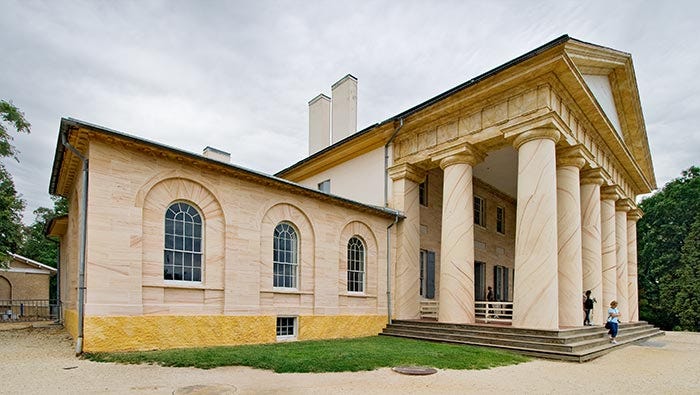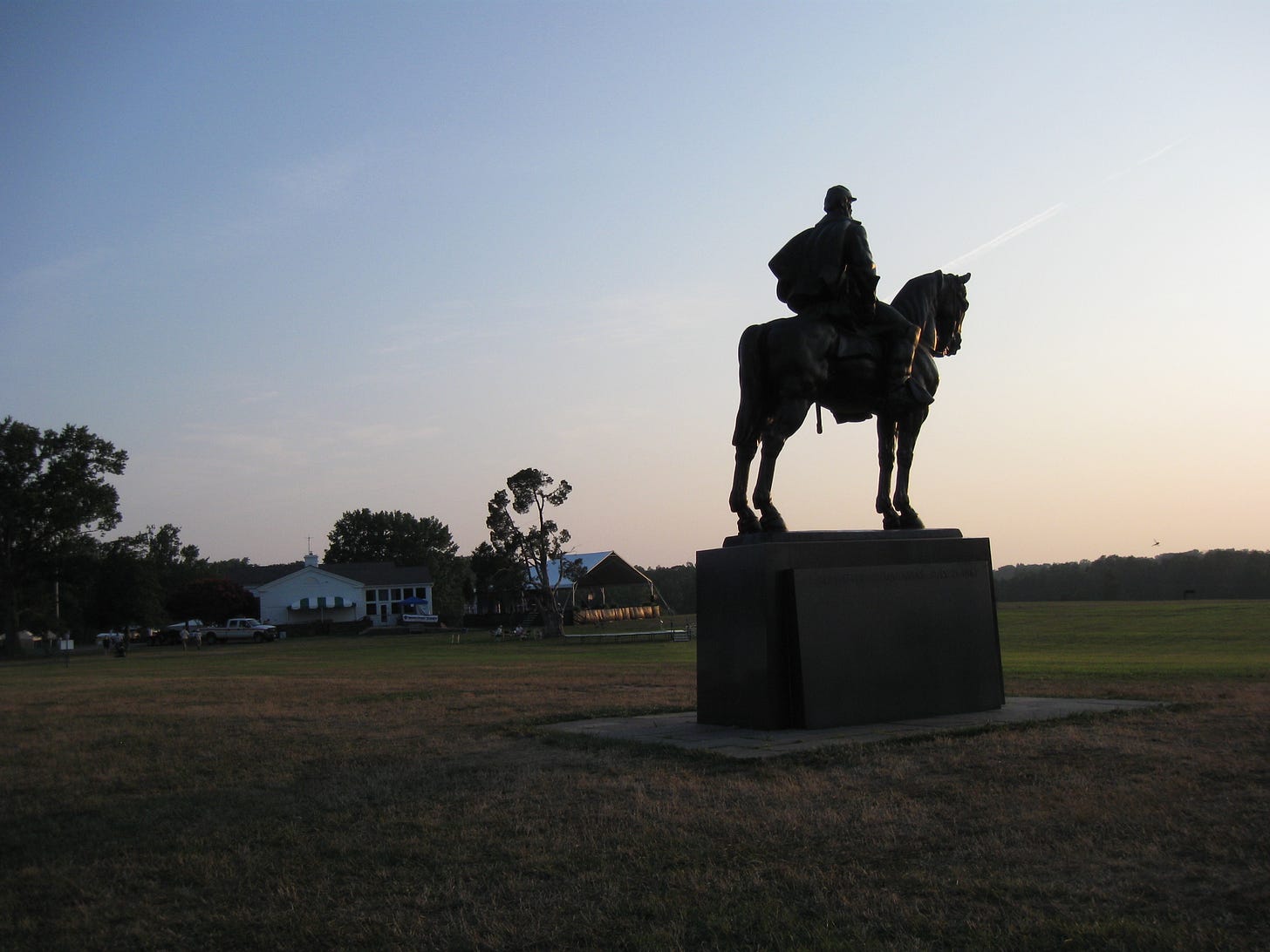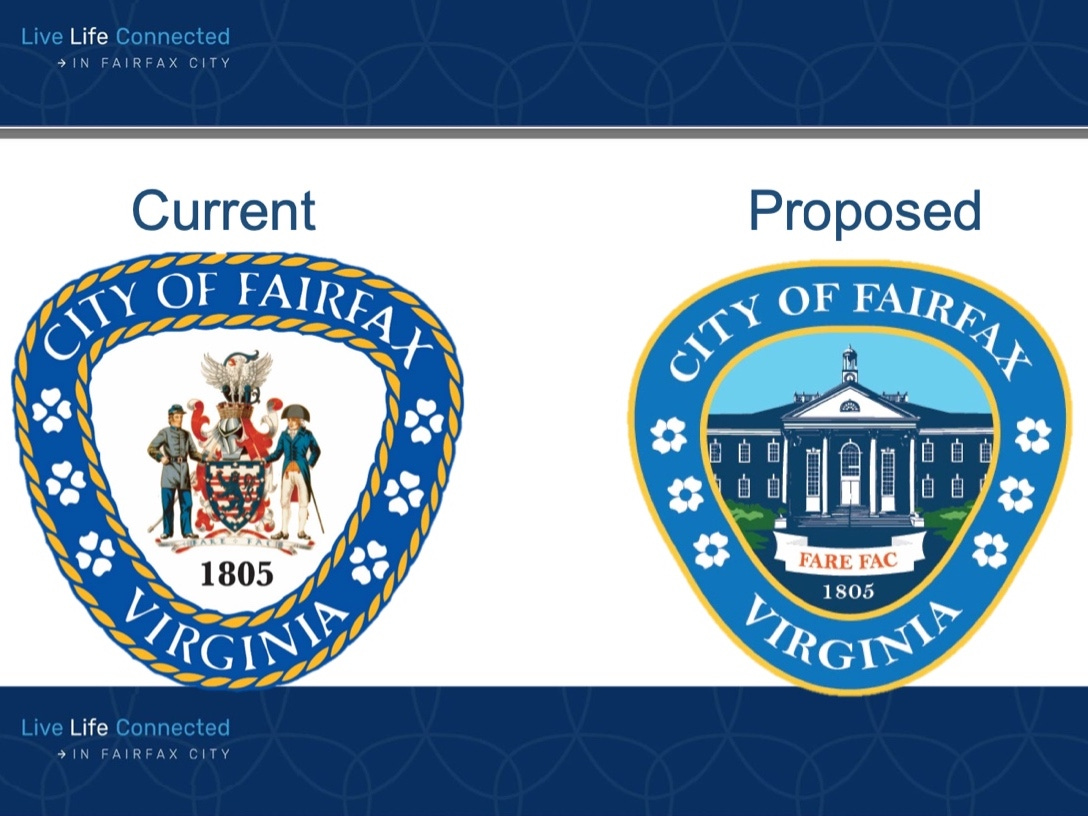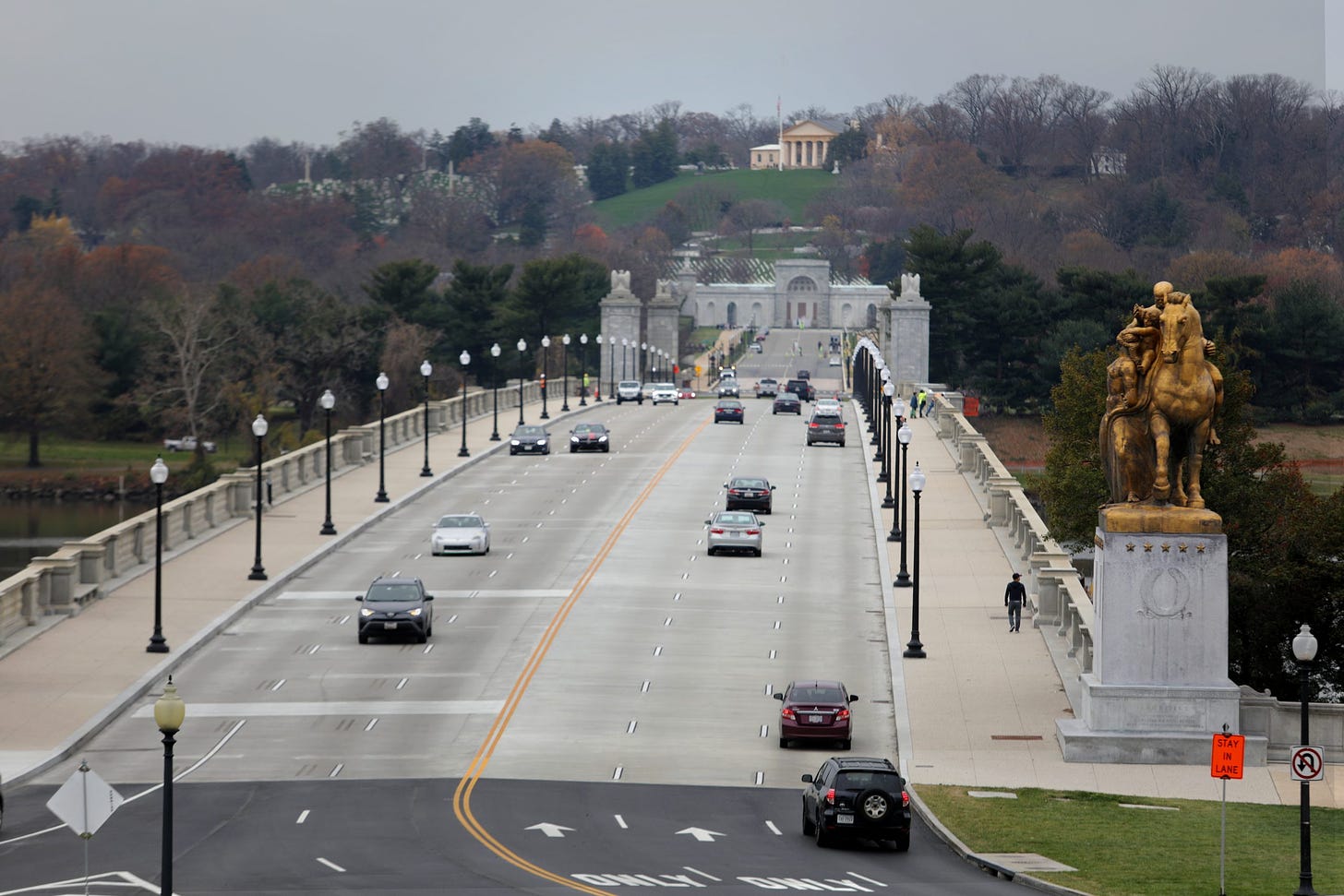Ricochet is the best place on the internet to discuss the issues of the day, either through commenting on posts or writing your own for our active and dynamic community in a fully moderated environment. In addition, the Ricochet Audio Network offers over 50 original podcasts with new episodes released every day.
 ‘Emancipation’ from Our History Continues
‘Emancipation’ from Our History Continues
No trip to Virginia is complete without excursions to Arlington Cemetery, including the stately mansion at its highest point, “Arlington House.” Add to that George Washington’s Mount Vernon, a half-hour drive south along the Potomac River. It is a Commonwealth steeped in colonial and Civil War history. At the time of our founding, it was our most populous state and once encompassed what is now West Virginia and Kentucky. Four of our first five presidents were Virginians.

And if you have time, a two-hour trip toward Charlottesville should include stops at three homes of America’s founders: James Madison’s Montpelier, James Monroe’s Ashlawn, and of course, Thomas Jefferson’s Monticello. Add visits to several great wineries in the region and perhaps Civil War battlefields, from Manassas to Chancellorsville.
And you’d better come quickly because it seems history is being rewritten here and elsewhere, largely thanks to a billionaire lefty philanthropist, David M. Rubinstein, and others. Politically incorrect statues have already been removed across the Commonwealth. Military bases in the area are being renamed. And Virginia’s junior Democratic US Senator, Hillary Clinton’s 2016 running mate, Tim Kaine, has again introduced legislation to remove Robert E. Lee’s name from Arlington House. It has long been designated as the Robert E. Lee Memorial. He inherited the place and lived there when he decided to join the rebellion. I can’t help but wonder when Thomas “Stonewall” Jackson’s iconic statue at the First Manassas Battlefield will be removed?

This is the same Tim Kaine who ignorantly and wrongly claimed that America created slavery on the US Senate floor. “The United States didn’t inherit slavery from anybody. We created it,” Kaine said in 2020. Duh. The Bible has 77 references to “slaves” and 21 more to “slavery” (NIV). Perhaps Kaine doesn’t know the Bible was written before Virginia became a British colony. This is also the same Tim Kaine who blames our 9.1 percent inflation (12 percent for food) on US tariffs imposed on China, where slavery is alive and well. The blame-America-first and economically illiterate Kaine, a former Governor of Virginia, wants to lift those tariffs, despite voting for every funding bill that increased our money supply by over 40 percent in recent times.
“It got created by the Virginia General Assembly and the legislatures of other states. It got created by the court systems in colonial America,” the loquacious and erudite Kaine added. “We created it.”
The New York Post recently featured the revised historical focus of Madison’s Montpelier, owned and occupied by the DuPont family a century ago.
No American flags fly at Montpelier, Madison’s plantation home in rural Virginia, and not a single display focuses on the life and accomplishments of America’s foremost political philosopher, who created our three-branch federal system of government, wrote the Bill of Rights and the Federalist Papers, and served two terms as president.
Instead, blindsided tourists are hammered by high-tech exhibits about Madison’s slaves and current racial conflicts, thanks to a $10 million grant from left-leaning philanthropist David M. Rubenstein.
“I was kind of thinking we’d be hearing more about the Constitution,” one baffled dad said when The Post visited the president’s home this week. “But everything here is really about slavery.”
“It’s been inspirational … I guess,” shrugged John from Wisconsin after taking the $35 guided tour. . .
“A one hour Critical Race Theory experience disguised as a tour,” groused Mike Lapolla of Tulsa, Okla., after visiting last August.
From the National Park Service’s website for Arlington House:
Arlington House is the nation’s memorial to Robert E. Lee. It honors him for specific reasons, including his role in promoting peace and reunion after the Civil War. In a larger sense it exists as a place of study and contemplation of the meaning of some of the most difficult aspects of American history: military service; sacrifice; citizenship; duty; loyalty; slavery and freedom.
When visiting this by car, make sure your maps are updated because streets are being renamed, too. Lee Highway, a major thoroughfare in Northern Virginia, has already been renamed “Langston Highway” in deep-blue Arlington, where I live. Jefferson Davis Highway – US 1 – has already been renamed in different ways in many places. As I wrote about last year, neighboring Alexandria has made it easier for residents to change the names of 68 streets named or linked to alleged confederate sympathizers or combatants. Nearby, Fairfax City’s council just went ahead and renamed theirs autocratically. They promise to reimburse residents who have to go through the laborious and expensive process of changing their addresses on driver’s licenses and the like.

Speaking of Fairfax City, their council also changed its official seal. The old seal features a confederate soldier and a “British Lord.” Who once owned the land, courtesy of a five million acre land grant from the British crown? None other than Lord Thomas Fairfax. It is not to be confused with Fairfax County, Virginia’s most populous county. Interestingly, the city isn’t contemplating changing its name. But give it time. The new seal featuring a colonial building seems fine, if boring, but it’s another example of erasing history.
Not to be outdone, Arlington is spending hundreds of thousands of dollars on redoing its official county logo, which is affixed to all kinds of signage and official vehicles. It used to feature an artistic rendition of Arlington House. Recently, the local NAACP objected. Thus began work on an uninteresting, uninspiring, and meaningless new logo, a comical diamond-shaped map of Arlington’s location compared to the District of Columbia and Alexandria. I think we knew that already.

I’m surprised Sen. Kaine hasn’t tried to change the name of the stunning Memorial Bridge, built in 1932 to connect Arlington Cemetery and the Lincoln Memorial and commemorate the nation’s reunification after the Civil War. The 90-year-old bridge was recently renovated and is a major Potomac River traffic crossing between the District of Columbia and Northern Virginia. The word “Emancipation” seems a popular choice for renaming streets and bridges among the woke. I’m sure Philly cop killer Mumia Abu Jamal would be happy to offer up his name, and more than a few Progressives would happily follow suit. After all, a street in Paris, France, is named after him.

I want to be emancipated from all this wokeness.
Don’t get me wrong. I’m for teaching all history, the good and the bad, in context. The best and most recent book on American history is University of Oklahoma Professor Wilfred McClay’s “Our Land of Hope.” It superbly, authentically, and objectively surveys the people and eras that The Woke are working overtime to erase, rewrite, and politicize. His only agenda is historical truth, not presentism.
I’m certainly okay with preserving slave quarters at Mount Vernon and Monticello, which some of Rubenstein’s generosity has done. All to the good. We need to know how these plantations (are we still allowed to call them that?) operated and how all their residents lived and worked. I want the full story, warts and all. But not to the exclusion or expense of the remarkable contributions of our founders, nor to advance woke causes.
The military base and street names and statues are less important but still provide opportunities to teach history. Let’s rename Fort Pickett, perhaps after the late Woody Williams, the last surviving Medal of Honor recipient from World War II, who was just honored at the US Capitol. They shouldn’t be used to pander or drive political agendas or punish the memories of people with complicated or nuanced histories. We have many heroes, men, and women, of all races and backgrounds worthy of honor, from George Day and Audie Murphy to Peter Salem and Harriet Tubman. There are many others. I’ve long advocated replacing Andrew Jackson’s mug on the twenty-dollar bill with Tubman or Frederick Douglass.
Jefferson wrote the Declaration of Independence. Madison is the father of our Constitution, especially our Bill of Rights (the first 10 amendments). Robert E. Lee, a former superintendent of West Point, played a significant role in helping reunify and nation and helped save Washington College in Lexington, Virginia, now called Washington and Lee University. Given all the books about him, Lee remains an enigmatic figure. During my first visit to Arlington House, I recall being told by a Park Ranger about how Lee wrestled sleeplessly, overnight, with the fateful decision to join his beloved Virginia in secession in a rocking chair next to his bedroom window at Arlington House. Why and how he came to that decision is important history.
Those who do not learn from history are doomed to repeat it. Or get themselves elected to the United States Senate, apparently. Like Tim Kaine, this includes those who seek to erase or rewrite history for political, ideological, or partisan purposes.
Published in General



Well I’m sure National review is fine with all this.
And as history is erased, we repeat the mistakes of the past that we did not learn about.
A tiny breath of fresh air: https://nypost.com/2022/07/16/history-shows-ive-been-lied-to-about-slavery-in-america/
The writer/aviator Antoine de St-Exupery observed slavery in North Africa in the late 1920s or early 1930s and wrote about it vividly and movingly. Excerpt: The French Aviators and the Slave.
One of the few really cool things I remember about the D.C. area when I was there briefly in the 1990’s. Great museums. And history. Saw them all plus Gettysburg. Too bad what those folks fought for over 160 years ago may go up in smoke. But the climate will have won, right?
Museums, probably most types, have been going downhill since the 80s. It seems they want to leave less to your imagination, rather you must make of it what the curators want you to make of it. I had a good, educational experience at “The Museum of Torture” (I think) in Amsterdam in 1988 and learned many things, such as the punishment for selling spoiled vegetables was often death, the Continent’s first civil servants were torturers, and the last country to employ torture in Europe was Austria. So when it came to San Francisco in about 2000, I went. Most of the implements were there, but the educational part was truncated and replaced with billboards asking if the US criminal law system was torture, and similar pre-woke nonsense.
I avoid Big Museum, but sometimes smaller local ones are rewarding. Mendocino County has a very nice museum featuring old logging equipment, an actual steam powered steam shovel, and a display featuring the local hippy period.
Recall that one. Very cool. But the D.C. museums, thanks to taxpayer money, were very good. At least in the 90’s. Haven’t been back since then. Recall the opening of the Holocaust Museum. Mind blowing pics and history. One of the best I have ever been to.
Oh Bryan! National Review is not fine with all of this at all. John Fund has a very hard hitting story on this denouncing these moves. https://www.nationalreview.com/2022/07/jefferson-and-madison-homes-seized-by-woke-detractors-of-the-founding-fathers/. Perhaps it might be helpful to check stuff out before slurring or shredding people or institutions like National Review. National Review is completely aligned with this post. And yet, you are knocking them because they upset you at some other time on some other issue.
My goodness, we have a regular circular firing squad on the right.
Rich Lowey was all for removing statues.
That was why I stopped my subscription and I stopped reading them.
To be against this now, is too little, to late. Saw this coming when they were giving in on Confederate statues.
I don’t read them anymore and I never will as long as they’re willing to insult the legacy of brave men who fought for their country.
Also you have no business lecturing anybody on throwing slurs, Gary.
Yep. Don’t bother with history museums these days. I’m professionally connected to the world of public history, and let me tell you: You won’t find a culturally conservative person anywhere in these places. If not for the artifacts and buildings, I’d say . . . burn them down and salt the earth.
Little local historical societies are better, but only because they’re filled with retirees. These retirees tend to be supportive of the nonsense, of course (being nice, polite, and civic-minded), but their age and local attachments temper their insanity. When they go, their institutions will go, too. Nobody will be left but the blue-haired and pronoun-obsessed.
When you erase Confederate history, you erase a major part of US history. Instead of tearing down statues of Robert E. Lee, we should be teaching why he was venerated on both sides . . .
The greatest problem with what the guys at Monticello, Montpelier, and Arlington House are doing is that their ideological axe-grinding is based on a false understanding of the state of American civic education. They, like Zinn and his followers, presume that Americans are all a bunch of unthinking idolatrous boobs who have no idea that anything bad ever happened in the United States. Therefore, pouring cold water on the Founding Fathers is necessary in order to “balance out” the dull masses’ unduly positive view of American history.
This is not how things are. Kids these days get more of the bad than the good. The average American in the average school imbibes the liberal whig view of the country’s history, which is roughly this: The American story is the story of continuous righteous struggle between the forces of enlightenment and social change (represented by the North) and the forces of backwardness and conservatism (represented by the South). Every generation has a part to play in this struggle. Just as yesterday’s patriots defeated slavery, so, too, will this generation’s patriots defeat homophobia, transphobia, toxic masculinity, systemic racism, environmental degradation, pro-life sentiment, traditional Christianity, capitalism, and all other forms of oppression — or would defeat those things, if not for the existence of those dastardly Republicans.
If anything needs correcting, it’s the notion that capital-H History exists and has a “right” side.
Agree. Many communities have terrific, often privately operated museums. A personal favorite is the Prohibition Museum in downtown Savannah, Georgia, a must-visit. It is wonderfully interactive and very fairly represents the history of the era.
On one trip to DC about 10 years ago, during the Obama administration, we visited Arlington House. It was really run down. There wasn’t much to see, because the building needed funding for restoration. I spoke to a guide there about that and he said that no one wanted to pay any money to restore the home of Robert E. Lee. I wasn’t aware that the Park Service ponied up some money and restored the building. However, any news story I found about the restoration emphasized slavery, slave artifacts, etc., etc.
I hadn’t really travelled through the south much until this past winter, when I fled to Florida. Driving through Kentucky, Tennessee, Georgia and northern Florida, there are historical signs and monuments everywhere–from the interstate to small town squares. If it were not for southerners hanging on to their battle flags and stories of the glorious lost cause, I don’t think we would know much of anything about the actual history. When I drive down next year, I plan to take more time and explore.
McClay’s Our Land of Hope is excellent.
We have for most of our married life enjoyed visiting historical sites. I think I grasp history better when I’m surrounded by its physical manifestations and some of its physical context. I think I have learned a lot from “living history” museums. If I see an honest representation of a historical figure we now consider “problematic” or “unacceptable,” but can see why people of the time would have admired, it helps me see that attractiveness in figures of today, and to look extra carefully at where such figures might be leading their followers. If I can see why the historical figure was attractive, I can factor that into seeing whether current figures risk also becoming unacceptable, or whether they might control that attractiveness in a way that is more likely to produce more positive results. If those figures are erased or presented only as villains, I will not learn how to judge what is going on today, and I likely will miss some important information.
But we have become reluctant to go much in recent years as the historical museums and site managers have increasingly pushed the woke ideology. Especially to present EVERYTHING through the lens of slavery to the exclusion of teaching about anything else. Not only do the museums become less fun, they become less informative.
A more selfish line I bring up to my peers if they are tempted to dismiss or erase someone for something we currently consider unacceptable, is to point out that we all have done or will do something that some future generation will consider unacceptable. Do you really want to encourage a culture in which your great-grandchildren will have to disavow their relationship with you because of something you did or said?
Oh Bryan!
Yes!
Thanks for making my point, Gary.
Great point. There was a “cancel” campaign run against me during my last days before retiring from my last employer (Campbell Soup) over a tweet I made about the Open Society Foundation (you know who that is) providing funding for the October 2018 migrant caravan (the first big one). The mob hugely came after me, even though Michelle Malkin’s subsequent book, “Open Borders, Inc.” largely confirmed my accusation, as have others. I attracted scathing and inaccurate headlines and stories on CNN and elsewhere (a quick Google search will unearth them), all part of the cancel culture campaign to get me “fired” (I wasn’t). Instead of being ashamed of what I did, my sons stood behind me, proudly, because they knew I was right. THAT is the culture we need to promote. I’m not worried about my progeny being “ashamed” of my encounters with the crazies. But I get your point. We must not leave history to modern-day Mao Tse Tungs who seek to eradicate the four “olds.” Old ideas, culture, customs, and “habits of the mind.” Like, critical and free thinking.
This sort of thing appears to be trendy. I remember seeing this
on a water tower. Been there for years. If you’re lost, then come across this, you know where you are. (Hint: The spaces between represent highways.) sarc/
Thought it was dumb when I saw it. Doesn’t seem any more brilliant now.
Arlington is way behind.
These logos really set these communities apart. sarc/ again.
I am late to this post, but I have a better proposal for Fairfax’s new logo.
I can provide my services to any interested municipality.